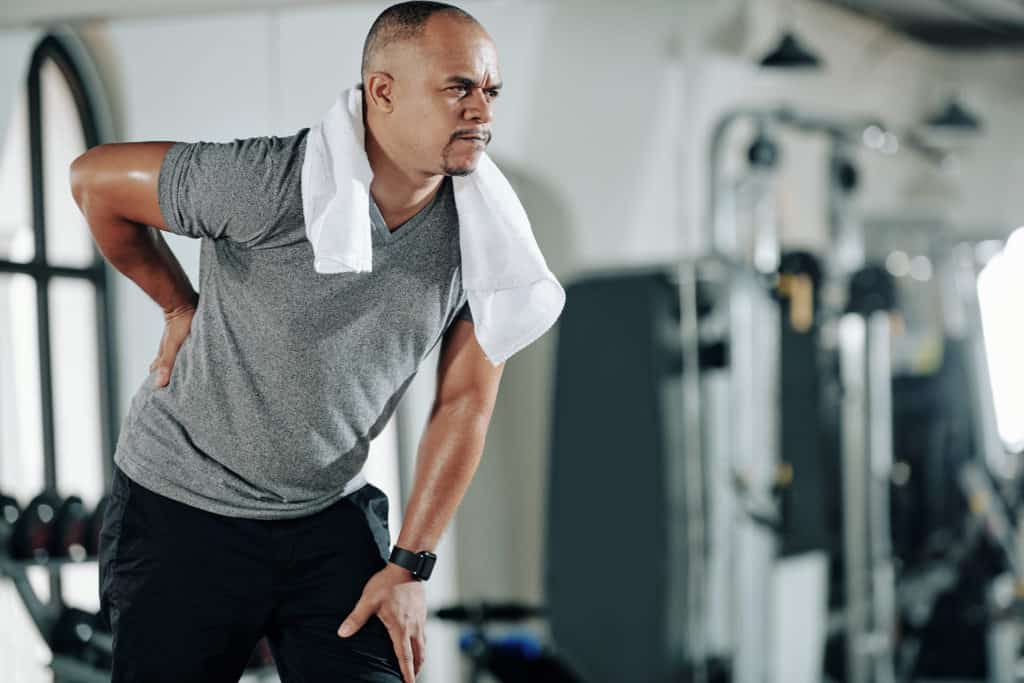Is Elliptical Good For People With Back Pain?
When it comes to keeping up your fitness routine, back pain can be anything from a passing annoyance to a debilitating condition in need of serious rest and recovery.
Those who find that firm, impactful movements are causing discomfort may discover that the gentler flow of an elliptical machine is just the workout they need right now and there are some forms of back pain which may benefit from elliptical use.
But Is Elliptical Good For People With Back Pain? The elliptical is not good for certain types of back pain, the elliptical’s range of motion may in fact exacerbate existing problems – in short, there’s no ‘one size fits all’ answer.
Elliptical trainers, with their relatively low-impact on the body’s joints and limbs when compared to more jarring sports such as running or weight lifting, are often seen as a good way of gradually rebuilding whole body strength during periods of injury recovery, as well as maintaining or improving cardiovascular fitness.
However, to complicate matters, back pain can have its roots in a number of different causes and injuries, many of which will need handling differently depending on their location and significance.
Elliptical Back Pain
In this article, we will take a closer look at some of the potential benefits of elliptical training for certain types of back pain, as well as instances in which other forms of exercise might be more suitable. As with all injuries, if your back pain persists, is restrictive, severe, or appears to be worsening, we would recommend getting seen by a doctor or specialist as soon as possible!

Is Elliptical OK for Herniated Disc?
Your spine is made up of numerous vertebrae (33, in fact!), in between which are jelly-like discs which allow for compressive movement and flexibility. A herniated disc is when one of these intervertebral discs slips or extends out from its allocated space, potentially pressing on nerve endings or the spinal cord itself. This can cause anything from mild discomfort to intense pain, numbness, and loss of mobility.
If this is the cause of your back pain then the elliptical, though a more forgiving form of exercise than some, may not be ideal. This is because it is often found that, when using an elliptical, we tend to bend forward slightly at the waist, more so than when we are walking upright. This forward flex can sometimes exacerbate or cause pain in relation to herniation (a fancy word for when something is in a position it shouldn’t be – in this case the spinal disc!)
Furthermore, when exercising the upper body on the elliptical machine, you are likely to find that your spine rotates slightly whilst your arms are being drawn back and forth. As with forward flexion, this twisting in the spine could cause further discomfort in cases of herniated discs, and you may need to find an exercise in which your spine remains straighter.
Low impact benefits for certain back pain
There is, however, little doubt that a primary benefit of elliptical training is its low-impact, low-stress range of movement compared to some of its harder hitting work-out cousins. Running, weights, and other forms of strength building or intense cardio can often involve jarring amounts of pressure being repeatedly applied to your joints, and this pressure can exacerbate back discomfort.
With the elliptical, your feet do not leave the pedals, with the exercise coming from fluid, gentle movements rather than repetitive impact upon a hard surface. This can prove a relief for certain types of back pain that respond poorly to sudden movement or compression and some sufferers from back pain report advantages in using the elliptical when compared to other workouts.
Keeping a good posture and form on the machine will help with this – keep your feet flat on the pedals, try to keep your back as straight as possible whilst moving the legs, and allow a microbend in the knees and elbows for ease of movement. Focus your weight in the lower half of your body and engage your abs to ensure an upright carriage.
It may be some gentle trial and error (accompanied by appropriate medical advice from your doctor or physician!) will be needed to discover whether or not the elliptical feels better for your particular injury or discomfort. Pain, particularly when it comes to the back, is usually a sign to be heeded – don’t carry on if it hurts!
Lower back sore from elliptical?
Unfortunately, it is difficult to say with any certainty whether elliptical use can be seen as a reliable remedy for lower back pain or something that can in fact exacerbate it, though it’s relatively fluid nature is less likely to cause immediate injury than sudden movements such as weighted squats, lunges, or sprints.

Is Elliptical OK for Lower Back Pain?
There is anecdotal evidence out there suggesting that certain forms of chronic lower back pain are improved by the comparatively gentle strength and cardio training offered by the elliptical. If you feel that your lower back does not become stressed from lumbar movement, the elliptical may be helpful in building muscle strength in the area to guard against future injuries.
At the same time, there are those who have claimed that the range of motion involved in elliptical use – the slight torsion in the spine and gentle bend in the waist – actually leads to aching and does not help to reduce pre-existing discomfort.
You can use precautionary measures like this back support but you must exercise with caution:
It may be that the appropriateness of the elliptical in such instances is partially dependent on whether your elliptical back pain is being caused by an acute muscular injury or more chronic degeneration and lack of function in the lower spinal discs. Once again, a diagnosis from a medical professional could be useful in pinpointing the cause of the pain and the best course of action to try to remedy it.
Is Elliptical Good for Lower Back Pain?
Although it may seem to be good to use the elliptical for lower pain due to its low impact nature. There appear to be limited detailed studies exploring the interaction between elliptical use and lower back pain.
However, a recent though small scale study in 2020 indicated that participants who completed a 6 week elliptical exercise routine were likely to see a noticeable improvement in self-reported pain levels, with participants having been selected for experiencing non-specific chronic back pain for at least 3 months prior.
Is Elliptical Good for Back Pain?
You may find the comparatively gentle exercise afforded by elliptical machines useful in building strength and cardio-vascular fitness whilst you are experiencing back pain, particularly if you find this to be a more comfortable form of exercise than other, higher impact work-outs.
Nevertheless, elliptical back pain can sometimes be caused by more structural issues in the spine or musculature, requiring medical diagnosis and caution. There will be some cases in which the range of movement provided by an elliptical machine actually results in further pain, in which case it should be discouraged.
Elliptical for Lower Back Pain
When treating chronic lower back discomfort, it is also worth bearing in mind the link between our psychological well being and our lived experience of pain. Exercise of various forms, including that afforded by elliptical trainers, is recognised as having short and long-term effects on our mental health and general functioning, which in turn can help reduce chronic pain of all forms, including that of the back.
In this sense, any exercise that does not exacerbate lower back pain or lead to further loss of function can be seen as a positive step towards rehabilitation and healthy living. Therefore you can use the elliptical for back pain.
As with any injury or discomfort, it is always advisable to get your doctor’s advice first if you are concerned about whether or not an unfamiliar type of exercise is going to improve or exacerbate any condition you’re currently experiencing.
It is also worth listening closely to your body when trying new exercises or using the elliptical for lower back pain – take things slow, take things steady, and if it hurts in a way that doesn’t feel right, stop, rest and re-assess.
An ex-triathlete, fitness coach and writer with a Masters in Sports Physiology. Fitness is my passion and I've had my fair share of home fitness equipment tried and tested!




4 Comments